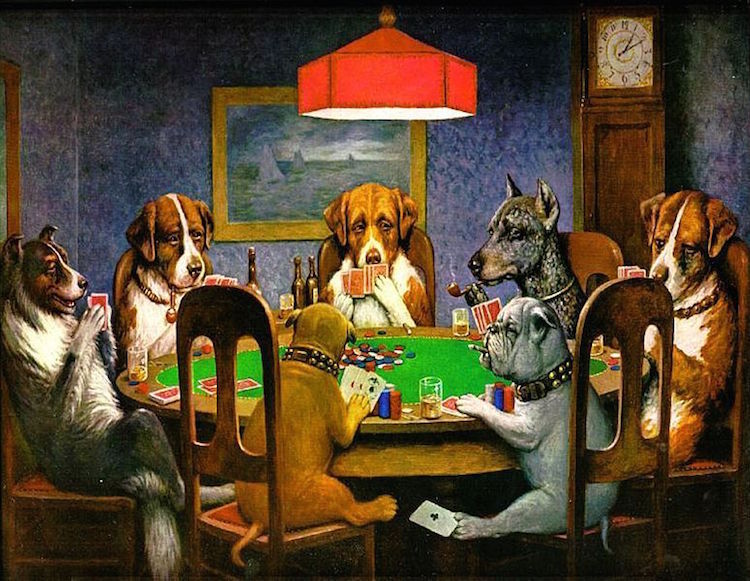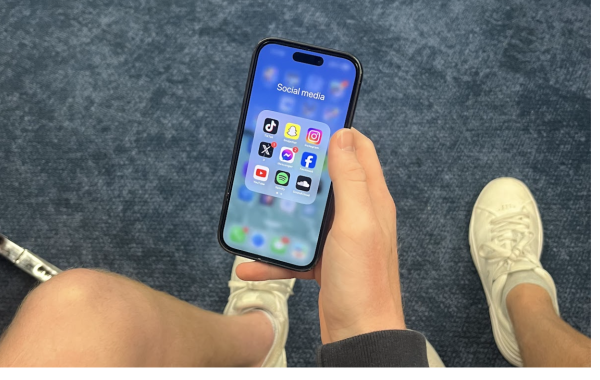OPINION: Gambling: It’s Not Odd to Take Some Risks
Painting by Cassius Marcellus Coolidge
One of the most iconic poker images, “Dogs Playing Poker”, represents what an average home game may look like: people, in this case dogs, sitting around a table with cards in front of them and a pile of chips in the middle.
When people think of the word gambling, it’s usually in a negative connotation. However, that doesn’t mean that low-stakes, social gambling by playing cards — like poker, baccarat, or blackjack — doesn’t bring some benefits. While many gamble with the hope of winning money, money isn’t the only thing one might reap from the experience.
Often, gambling requires some sort of strategy and the use of statistics. There is always some type of odds of something happening, the root of gambling. The use of strategy and the calculation of odds are true, real-world applications of statistics. Some players may look to gamble more than others, and some may engage conservatively, but at the end of the day, gambling is in a large part an exercise in applied statistics. It is problem-based learning.
When playing poker, for example, if somebody has a four flush, there are, at most, 9 cards of that suit that can come out as the next card. The person playing that hand knows this, and she bets accordingly. She must use strategy and statistics to see if she is getting the correct odds to continue.
In poker, you bet off of a variety of factors, but the size of the pot is the most important one. You need to have the correct odds to continue in order to call or make bets profitably. For example, I’m not going to call a bet that is the size of the pot when I just have a flush draw because it statistically does not make sense for me to do this profitably. On the other hand, if somebody bets only 30% of the pot while I have a flush draw, that’s an easy call for me. This is a great way to exercise the mind, as I am applying something that may be learning in statistics classes here at Benjamin.
A large part of various card games is reading the body language of someone, and by playing cards, people can really get good at doing this. Needless to say, having the ability to interpret the actions of somebody and pick up on clues can be extremely beneficial throughout life and with the countless people that you meet.
If you identify a pattern in somebody in the way that they play, it can be used against him. If you find that somebody bluffs in poker a lot, you tend to call his bets or raise his bets at a higher frequency than you may for somebody else who does not bluff as much.
Senior Luke Egizio finds this strategic side of poker to be the most appealing part of the game.
“I like it for the strategic aspect of trying to understand and read people and understand why they do certain things,” he said. “It resembles putting a puzzle together and when you figure out that puzzle, it’s the best feeling in the world.”
Similarly, if you find that someone always does the same thing when put into a certain spot, you can exploit her. If you find that somebody always tends to bet a small amount on her flush draw in late position, you can expect this, and that will alter your play. It’s a mind game that requires strategy.
Sometimes, people gamble for the enjoyment of it. Playing low-stakes games — or even for no money — is because the games are fun. Playing craps is fun. Playing Rummy is fun. Playing Hearts is fun.
Adding to this fun, especially at home games, is spending time with people who are close with you: your friends. Playing card games — even for low stakes — can be more about the fun of spending time with others while also playing an enjoyable game than winning the money.
Since I began playing poker with my friends over the last few months, it has led to some of the most fun and enjoyable moments over that time. The buy-ins for our game are only at $5, and the winner typically wins anything from $10 to $25. That isn’t a lot of money, and you’ll usually lose more than you win. We play for fun.
Gambling is a risk, and it can be difficult to win. However, that does not mean that it cannot have other various benefits.

Charlie Spungin is a senior and has been a member of The Pharcyde for four years. He is the Editor-in-Chief and formerly the Copy and Sports Editor....











